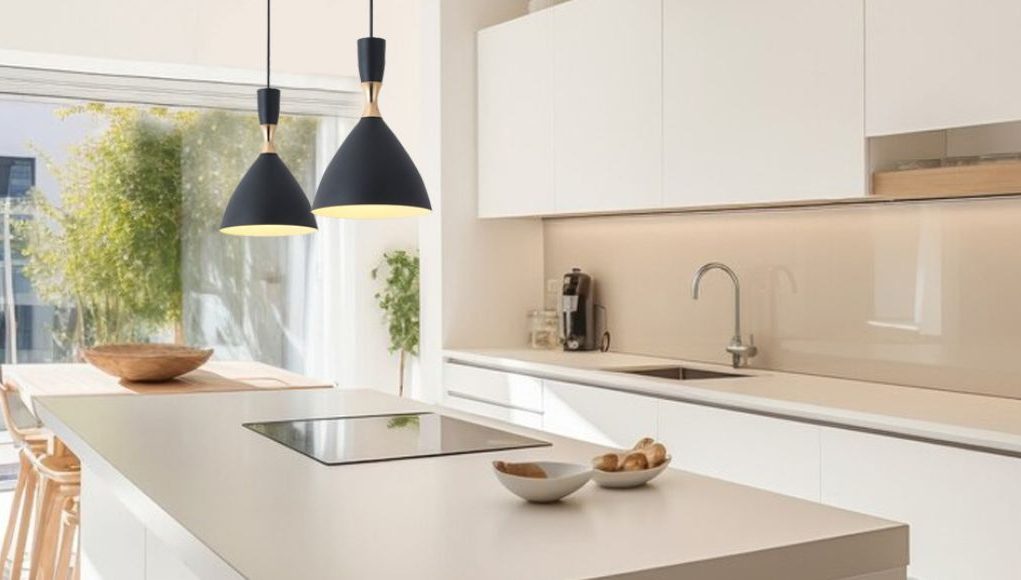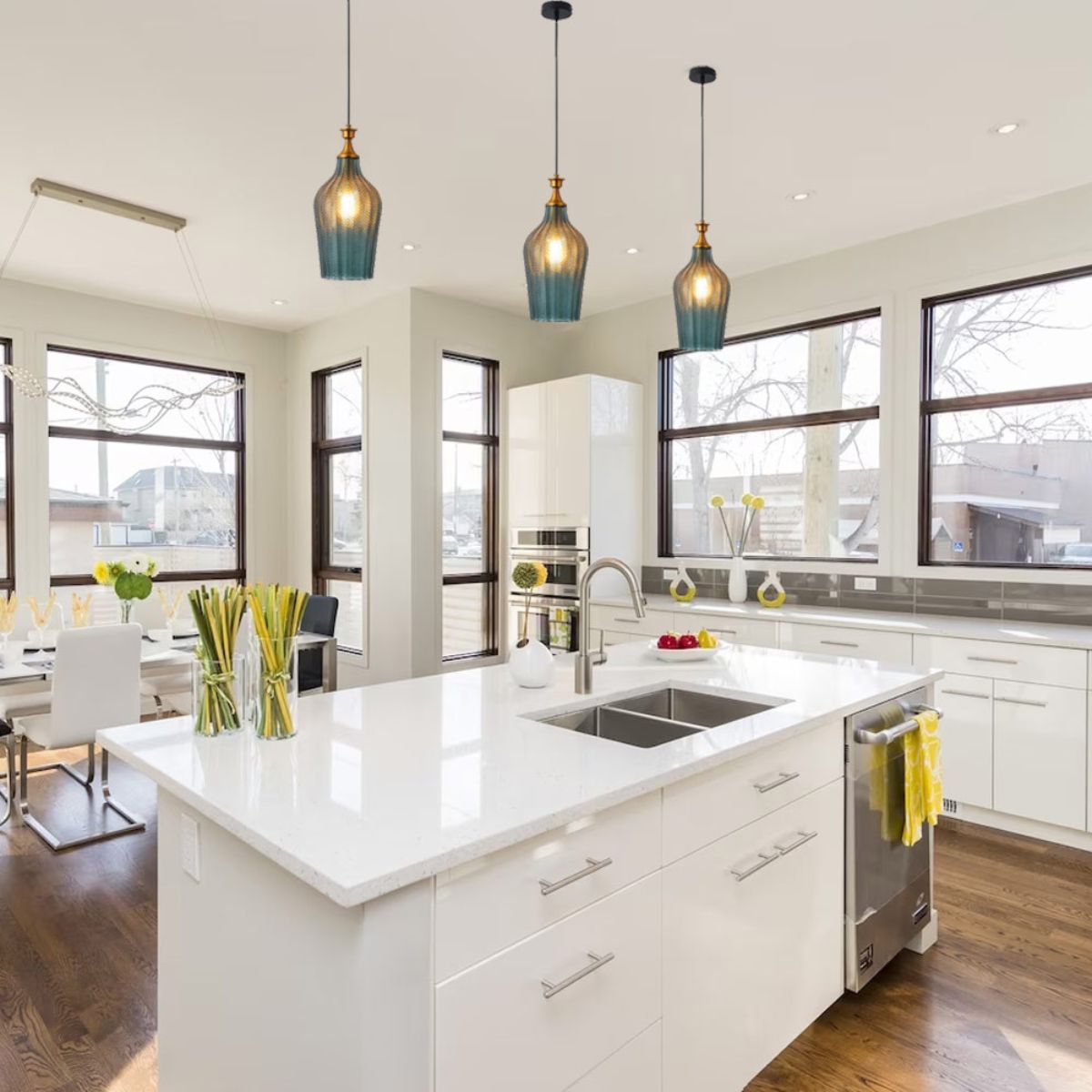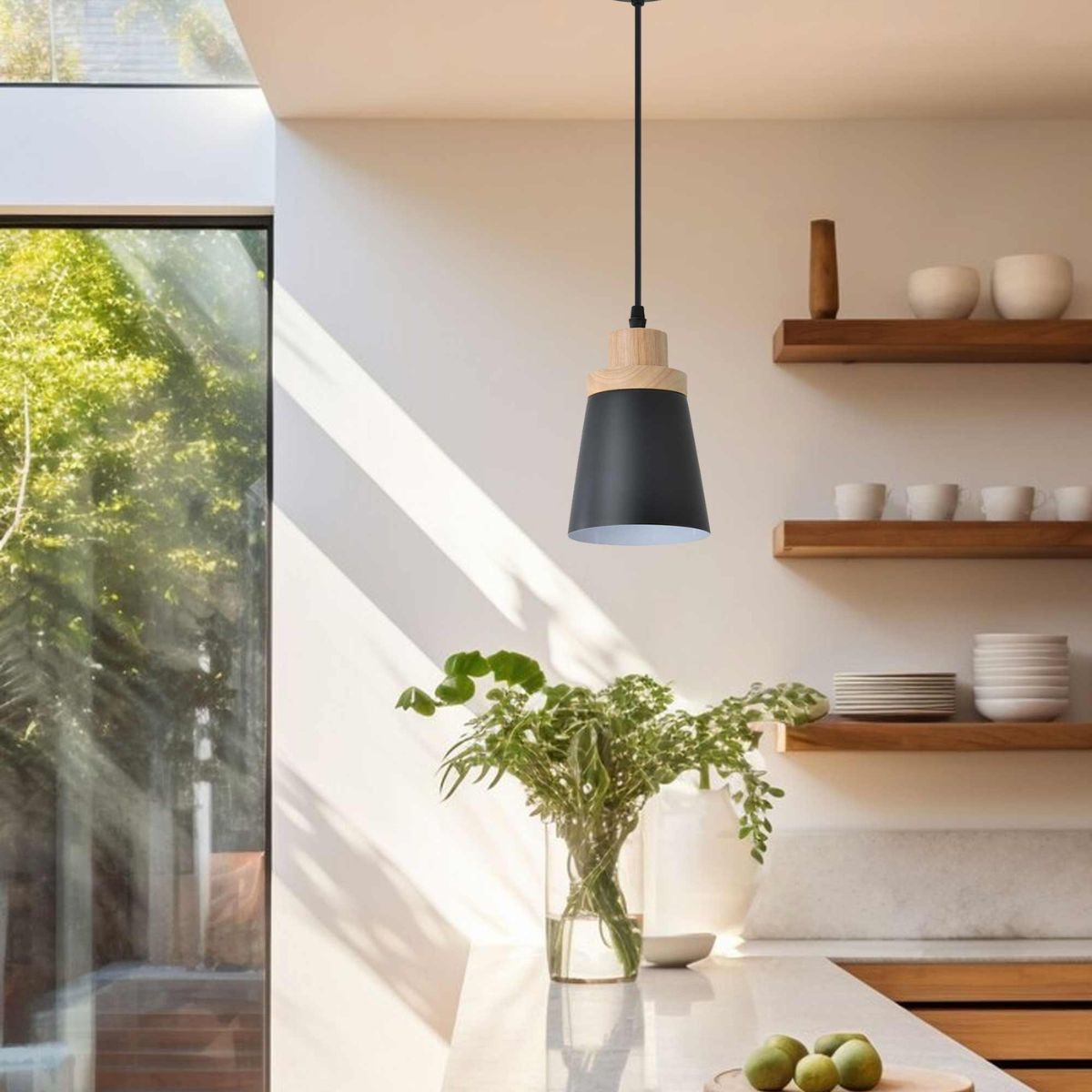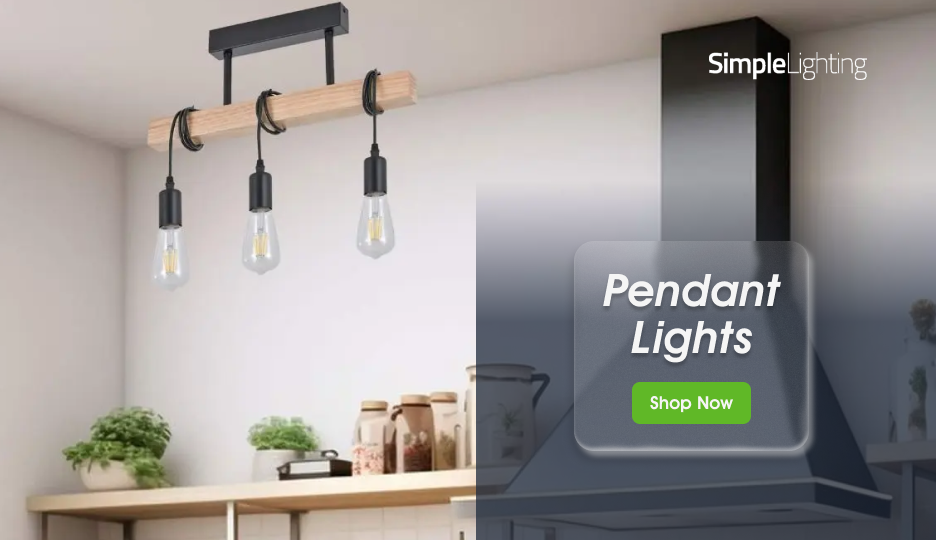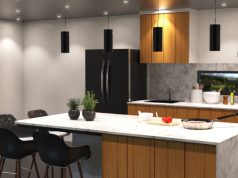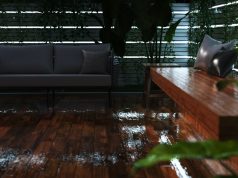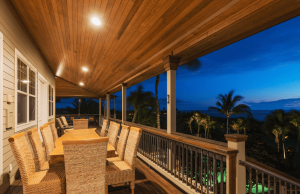Who doesn’t love a kitchen island?
It’s a versatile space, so it can be equipped with an additional sink or cooktop. It also provides extra counter space, offers additional storage, and serves as a central social hub for your home, where homework, casual dining, and guest entertaining all happen.
In other words, it’s the heart of a modern kitchen.
That’s why the right lighting is crucial for the kitchen island in particular. It’s what brings this space to life… and potentially the whole kitchen.
In this guide, we’ll explore how to combine three of the go-to choices when planning kitchen island lights to create a perfectly layered lighting design.
The goal? A beautiful and functional kitchen island.
The Importance of Layered Lighting for Kitchen Islands
First, before we get to choosing the fixtures for your kitchen island, it’s essential that you understand the concept of layered lighting.
In lighting design, every well-lit room incorporates three layers: task, ambient, and accent lighting.
- Ambient lighting sets the overall mood and fills the space with a comfortable, even glow. It’s what you would refer to as the “foundation” of your lighting.
- Task lighting provides direct, focused light for practical activities such as chopping, cooking, or reading recipes.
- Accent lighting adds drama, depth, and personality by highlighting features or creating subtle visual interests.
A kitchen island is used for both work and relaxation, so it benefits greatly from this layered approach in lighting.
Imagine relying on just one lighting type, say ambient light, for the whole kitchen. It would make the space look and feel flat.
Picture this:
- Pendant lights create the ambient layer. They define the island as a focal point and add warmth.
- Spotlights serve as task lighting, ensuring you can see clearly for food prep, cleaning, and homework.
- LED strips provide the accent layer, adding a touch of sophistication and visual depth beneath countertops or along kickboards.
When combined, these three create a balance: bright enough for work, soft enough for dining, and stylish enough to impress your nosy neighbour.
Pendant Lighting for Kitchen Islands
Pendant lights are the showpieces of kitchen lighting. Particularly kitchen islands. They not only illuminate but, as a centrepiece, also anchor the focal point of your kitchen design.
Choosing the Right Pendant Style
The key here is to choose a style that complements your kitchen’s personality (a.k.a. your personality).
Some common pendant styles:
- Modern: Sleek metal finishes, geometric forms, or glass pendants fit perfectly in contemporary kitchens.
- Industrial: Exposed bulbs, wire cages, and matte black or brass finishes lend character and edge.
- Minimalist or Scandinavian: Simple lines, muted tones, and natural materials create an understated elegance that blends seamlessly with modern cabinetry.
Contrast is Key
If your kitchen features strong design elements, like patterned tiles or bold cabinetry, choose simple pendants that don’t compete. Conversely, in a neutral or minimalist kitchen, statement pendants can inject personality and visual interest.
Correct Pendant Placement and Height
Now that you have the style figured out, it’s time to get the placement right. Yes, it’s just as important. Poor positioning is not an option when installing your pendants.
Too low and it can result in shadows. Too high and you’ll have glare. Bad placement can lead to a cluttered look.
Here are a few golden rules for pendant lighting over a kitchen island:
Spacing — Pendants should typically be 30 inches apart. This ensures even illumination without overcrowding.
Height — The bottom of each pendant should hang around 30 to 35 inches above the countertop. This allows for ample light spread while keeping the sightlines open across the island.
Balance — For symmetry, position the pendants evenly across the length of the island, centring the entire cluster rather than each light.
TIP: For long islands, consider three pendants of equal size for a balanced look. For smaller islands, a pair of medium pendants or even a cluster of mini pendants can create impact without overpowering the space.
Lighting Effect and Bulb Choice
The beauty of pendant lights is that you choose the bulbs you put on them. That means that the bulb you select determines both the brightness and mood of your space.
We suggest opting for LED light bulbs for energy efficiency and longevity, and pay attention to colour temperature:
- Warm white (2700K-3000K): Creates an amber glow, ideal for a relaxed and inviting ambient lighting over dining areas.
- Natural white (3500K-4000K): Perfect for multitasking kitchens, offering a clean, bright appearance without harshness.
To avoid or lessen glare, look for pendants with diffusers or frosted glass shades. For versatility, use dimmable LEDs so you can transition from bright light during meal prep to a softer glow for evening dining.
Using Spotlights to Complement Island Lighting
While pendants deliver style and atmosphere, spotlights ensure practicality.
Spotlights help eliminate shadows and provide essential task lighting for the island’s work surface.
Why Spotlights Matter
Pendant lighting alone can leave parts of the countertop in shadow, especially if pendants are decorative or positioned too high.
Spotlights fill these gaps, creating even, functional light, so you can better see when you’re doing food preparation, cooking, or cleaning.
Placement Tips
Direct light where needed: Position spotlights directly above the island’s perimeter or slightly angled to avoid glare.
Layer with pendants: Place spotlights strategically around the pendant zone, not directly above them, to avoid conflicting beams, shadowing, or overlighting.
Distance from ceiling edge: Keep recessed spots around 60-90cm from walls or cabinets for balanced illumination.
Spotlights also give you flexibility. Many designs now feature adjustable angles, allowing you to direct light exactly where you need it.
Pro Tip: Combine dimmable spotlights with your pendants. This way, you can boost brightness during cooking, then dim everything down for a softer evening ambience.
Adding LED Strips for Accent and Ambience
The third layer of a perfect kitchen island lighting comes from LED strips. These lights are subtle, yet transformative. They add depth, luxury, and atmosphere without taking the centre stage.
Under-Counter LED Strips
Create a floating island effect by installing LED strips below the countertop lip.
The glow visually separates the counter from the base, making the island appear lighter and more refined. And if you have textured materials like stone, quartz, or wood, this would be a really effective accent lighting.
Under-counter LED strips also act as soft night lighting, ideal for navigating the kitchen in the evening without switching on glaring overhead lights.
Kickboard and Recessed LED Strips
Another popular location for LED strips is along the plinth (kickboard). This technique creates a gentle wash of light across the floor, adding dimension and accentuating the island’s architecture.
It’s a small detail that can make a big design impact, especially when you’re sneaking for a “light” snack in the middle of the night and you don’t want to wake other people in the house.
Installation Tip:
Make sure to get IP-rated LED strips if you’re installing near water sources like sinks and dishwashers.
Colour Temperature and Dimming
Yes. The colour of your LED strips can completely change the feel of your kitchen:
- Warm white (2700K-3000K): Cosy and inviting, which is ideal for entertaining or dining.
- Cool white (4000K-5000K): Crisp and modern, which enhances glossy finishes and minimalist designs.
Combining Pendants, Spots, and Strips Seamlessly
The key to a great kitchen island lighting lies in balance. Each lighting type has a role to play, and when layered thoughtfully, they work together to create both functionality and beauty.
Here are some examples:
1. Sleek and Modern
Get pendants with a glass or chrome finish. These are perfect for a sleek, modern look, serving as the main style element.
Recessed spotlights are also a go-to as they offer task lighting without the ceiling clutter.
Use under-cabinet strips to add a soft glow to the surrounding island space.
2. The Subtle Statement
Perfect for minimalist kitchens.
Use two slim pendants for soft overhead light, complemented by recessed spots in the ceiling for brightness and under-counter single-colour LED strips for gentle ambience.
The result: Understated sophistication with practical functionality.
3. The Entertainer’s Setup
If your island doubles as a bar or gathering spot…
You can choose dimmable pendant lights and colour-tunable LED strips. Switch between warm and cool white light depending on the event or occasion.
Warm light enhances dining, while brighter or cooler tones suit morning routines or cooking prep.
Pro Tip: To control each layer (ambient, task, accent), connect your lights to separate circuits or a smart system.
Common Kitchen Island Lighting Mistakes to Avoid
You can have the best intentions, but not all “this might look good in the kitchen” will actually work out. A few design missteps can be what breaks your dream kitchen.
Here are some common pitfalls to avoid:
1. Overcrowding with Pendants
There is a thing called too many pendants. Don’t overwhelm your space. Aim for proportional balance: typically, two to three pendants will do, depending on island length.
2. Uneven Spacing
When we say, “keep your pendant lights 30 inches apart”, we don’t mean “35 inches here and 40 inches there.”
Mismatched gaps between lights might not be too obvious close up, but even a subtle discrepancy can disrupt visual symmetry. Measure carefully and centre the arrangement relative to the island.
3. Inconsistent Colour Temperatures
Improper mixing of warm and cool whites creates visual tension. You can combine warm and cool white as long as they’re on “different layers.”
For example: A warm white light for ambient lighting, and a cool white light for task lighting on the countertop.
4. Neglecting Task Lighting
“Bright enough light” may not be bright enough for task lighting.
Likewise, statement pendants may look stunning, but without sufficient brightness from spotlights or under-cabinet lighting, functionality can suffer and safety can be compromised.
5. No Dimming or Control Options
Your kitchen island is a versatile space. Lighting that can’t adapt to different moods or activities quickly becomes frustrating. Always include dimmers or smart controls for flexibility.
6. Ignoring Glare and Shadows
Exposed bulbs and too high pendant placement can cause glare. Too low might also cause unwanted shadows in most cases. Use diffusers, frosted glass, or adjust the height for a comfortable glow.
Your Island, Perfectly Lit
If only lighting your kitchen island were as simple as hanging a few pendants. But it’s more than that. It’s about creating a balanced, layered lighting that can adapt to any situation or occasion.
A carefully (and thoughtfully) designed kitchen island can transform your kitchen into a more versatile, welcoming, and visually stunning space.
Chopping vegetables? Serving dinner? Sharing a glass of wine or a cuppa? The right lighting will make every moment brighter, safer, and more memorable.
Ready to illuminate your kitchen island the right way? Check out Simple Lighting’s collection of pendant lights, LED spotlights, and LED strips today!


